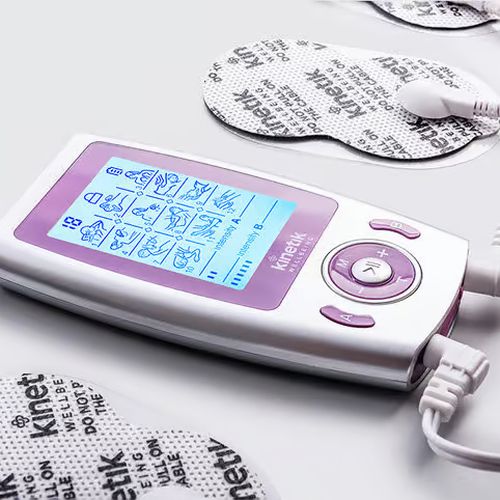Can TENS Therapy Help Manage Fibromyalgia Pain?
Fibromyalgia is a chronic condition characterised by widespread musculoskeletal pain and areas of tenderness, fatigue, sleep problems and cognitive difficulties. While there is no cure, various treatments aim to ease symptoms. One option is transcutaneous electrical nerve stimulation (TENS). But can TENS therapy help manage fibromyalgia pain?
What is Fibromyalgia?
Fibromyalgia causes pain and tenderness throughout the body, especially in areas like the back, shoulders, neck, hips and knees. The pain ranges from a constant dull ache to sudden short bursts and can be extremely debilitating.
Along with musculoskeletal pain, fibromyalgia patients often experience fatigue, non-restorative sleep and problems with memory and concentration. Symptoms may be triggered or exacerbated by emotional stress. The exact causes are unknown, but research suggests it involves nerves overreacting to pain signals.
Fibromyalgia predominantly affects women, with up to 90% of sufferers being female. It can develop at any age but most commonly occurs between the ages of 30 and 50. A family history and coexisting conditions like rheumatoid arthritis, lupus and chronic fatigue syndrome increase the risk. However, fibromyalgia can also occur with no apparent triggers.
How Could TENS Help Fibromyalgia?
TENS (transcutaneous electrical nerve stimulation) therapy uses a small battery-powered device to deliver low voltage electrical impulses through electrodes placed on the skin. The stimulation blocks pain signals reaching the brain, providing temporary pain relief.
For fibromyalgia, the electrodes can be placed over tender points or sore muscles. The tingling sensations from TENS are thought to interfere with pain perception, releasing endorphins – the body’s natural painkillers. TENS may also have a beneficial effect on the central nervous system by dampening the overactivity associated with fibromyalgia.
Some studies indicate TENS can significantly decrease fibromyalgia pain during and for a short time after treatment. Patients using TENS along with medication and exercise reported improved pain management compared to medication and exercise alone. However, more research is needed to confirm the benefits of TENS for fibromyalgia pain relief.
TENS Machines and How to Use Them
TENS devices range from small portable units with attached wires and pads to wireless systems using self-adhesive electrodes. Battery-powered models allow use at home without trailing wires. Most have adjustable settings to suit different pain types.
At Zoom Health, our best selling TENS machine is the Kinetik Wellbeing Dual Channel TENS Machine
For fibromyalgia, continuous stimulation rather than bursts may provide better pain relief. The electrodes can be repositioned until the optimal pain relieving area is found. Using TENS for 20-30 minutes two or three times per day is often recommended. It is important not to use TENS all the time or to turn the power up too high. Start low and increase as tolerated.
TENS appears safe for most people when used correctly. Mild skin irritation under the electrodes sometimes occurs. Check with a doctor before using TENS if pregnant, have a pacemaker or other implanted electrical device. TENS should not be used over the front of the neck, across the head or directly over the heart.
Is TENS Enough for Fibromyalgia?
While TENS may offer temporary fibromyalgia pain relief for some, it is unlikely to be sufficient as a standalone treatment. The benefits only last during and shortly after use. TENS is best used alongside other fibromyalgia treatments recommended by a doctor.
Medications like analgesics, antidepressants and anti-seizure drugs aim to ease pain, fatigue and sleep issues. Aerobic exercise helps improve physical stamina and sleep quality. Cognitive behavioural therapy and stress management assist with mood problems. A multidisciplinary approach combining medical care, exercise and psychological therapy tends to be most effective.
Summary
TENS therapy may provide temporary relief from muscle pain and tender points for some fibromyalgia sufferers. It is a safe, non-invasive option to try under medical guidance. However, TENS is not a cure and requires repeated use for ongoing effects. It appears most beneficial when incorporated into a wider management plan combining medications, exercise, and psychological therapies. More research on TENS for fibromyalgia pain relief is needed. Speak to a doctor about whether trying TENS could be helpful for you.
Managing Fibromyalgia Symptoms
Along with pain, people with fibromyalgia often experience a range of other debilitating symptoms. As well as directly treating pain, the goal is to improve general wellbeing and quality of life. A multimodal approach can help manage fibromyalgia symptoms such as:
Fatigue
Excessive tiredness and an overwhelming feeling of exhaustion are very common in fibromyalgia. Gentle exercises like walking, swimming or yoga can help boost energy and stamina when done regularly. Getting adequate sleep is essential – practicing good sleep habits and addressing any sleep disorders. Pacing activities over the day and avoiding overexertion assists in managing fatigue.
Sleep Problems
Many fibromyalgia patients struggle with disrupted sleep and waking up feeling unrefreshed. Sticking to a regular sleep routine, limiting daytime naps, cognitive behavioral therapy and medications can help treat insomnia. Checking for underlying conditions disturbing sleep, like restless leg syndrome or sleep apnea, is also recommended.
Anxiety and Depression
Mood disorders frequently co-occur with fibromyalgia. Relaxation techniques, counselling and anti-depressant medications often help treat associated anxiety and depression. Doing enjoyable activities, keeping up social connections and joining patient support groups also provide mood benefits.
“Fibro Fog”
Around two-thirds of people with fibromyalgia experience cognitive difficulties colloquially known as “fibro fog”. Problems remembering things, concentrating and multitasking are common. Practicing stress management, getting good sleep and making lists can help overcome fibro fog.
Other Problems
Additional issues like chronic headaches, numbness or tingling, balance problems, digestive trouble and heightened sensitivity to pain may arise. A holistic treatment approach addresses all symptoms together. Lifestyle measures like eating a healthy diet, reducing stress and pacing activities also help.
Lifestyle Adjustments for Fibromyalgia
While medications can treat symptoms, lifestyle and self-care are also very important in managing fibromyalgia. Steps like getting regular gentle exercise, eating a nutritious diet, reducing stress and pacing activities can make a big difference.
Diet and Nutrition
Eating a healthy, balanced diet helps maintain strength and energy levels. Foods rich in antioxidants and omega-3 fatty acids are particularly beneficial. Severe fatigue may also warrant supplements like iron, magnesium, vitamin D or B vitamins when deficient. Avoiding foods that aggravate symptoms such as alcohol, caffeine or highly processed items may also help some people.
Exercise and Activity Pacing
Low-impact physical activity helps reduce muscle pain and stiffness when done regularly. Walking, tai chi, Pilates and water aerobics are ideal forms of exercise. It’s important to pace activities to avoid overexertion which can worsen pain. Breaking tasks into smaller chunks and taking regular short rests assists pacing.
Stress Management
Chill out, if you can! Learning to manage emotional stress can lessen fibromyalgia flare-ups and anxiety. Practices like meditation, deep breathing, yoga, journaling and music therapy induce relaxation. Make time for hobbies and social activities you find calming or enjoyable. Consider counseling for help coping with stress.
Good Sleep Habits
Top quality Z’s are important. Getting quality sleep is vital for people with fibromyalgia. Having a consistent bedtime routine, limiting caffeine and daytime naps, and making the bedroom comfortable and dark helps promote restful sleep. Keeping electronics out of the bedroom, taking a warm bath before bed, and doing gentle stretches may also aid sleep.
Conclusion
Fibromyalgia is a complex chronic condition, so finding an effective management plan takes time and patience. While TENS therapy may offer temporary pain relief for some, it is just one piece of the puzzle. A multimodal approach combining medications, exercise, lifestyle adjustments, stress management, counseling and sleep hygiene tends to work best for improving symptoms and quality of life.
Photo by Anthony Cunningham for Zoom Health
Zoom Health is a leading UK supplier of Home Health Tests and Earplugs






